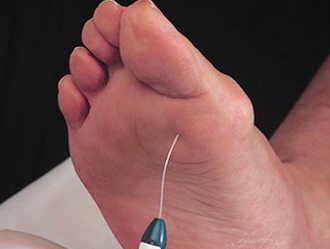When it comes to your feet, diabetes can affect them in three different ways: poor circulation, neuropathy, and reduced immune system.
Some of the more common diabetic foot problems include corns and calluses, wounds from poor circulation and numbness, dry skin and fissures, toenail and foot fungus.
Diabetes can be dangerous to your feet—even a small cut can produce serious consequences. Diabetes may cause nerve damage that takes away the feeling in your feet. Diabetes may also reduce blood flow to the feet, making it harder to heal an injury or resist infection. Because of these problems, you may not notice a foreign object in your shoe. As a result, you could develop a blister or a sore. This could lead to an infection or a nonhealing wound that could put you at risk for an amputation.








Share On: